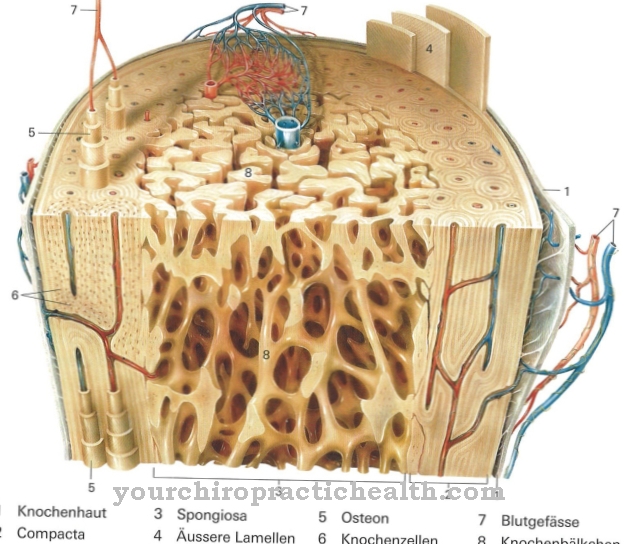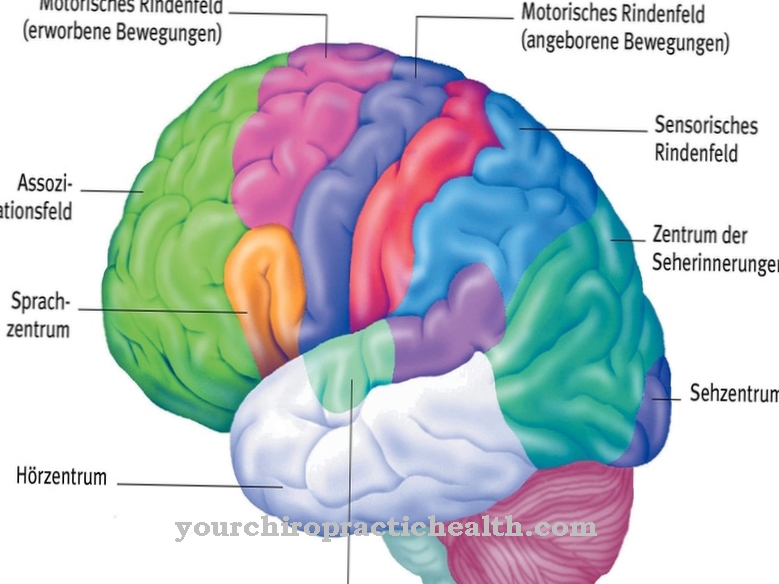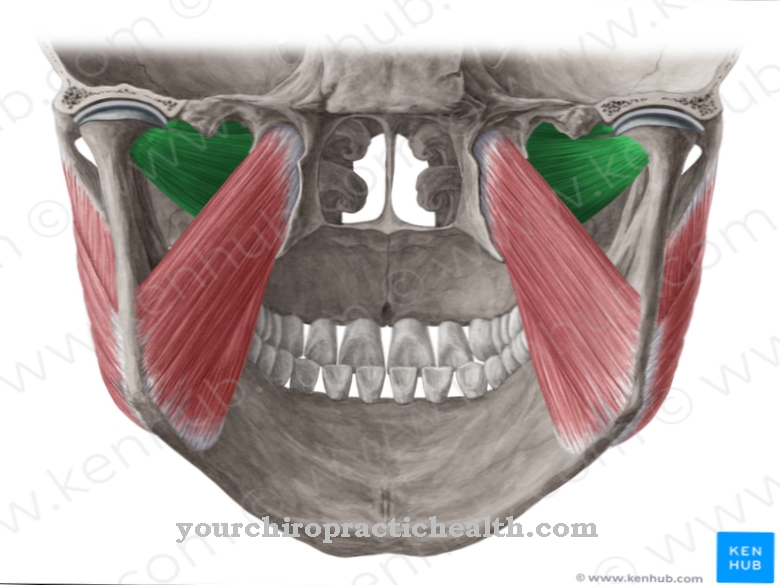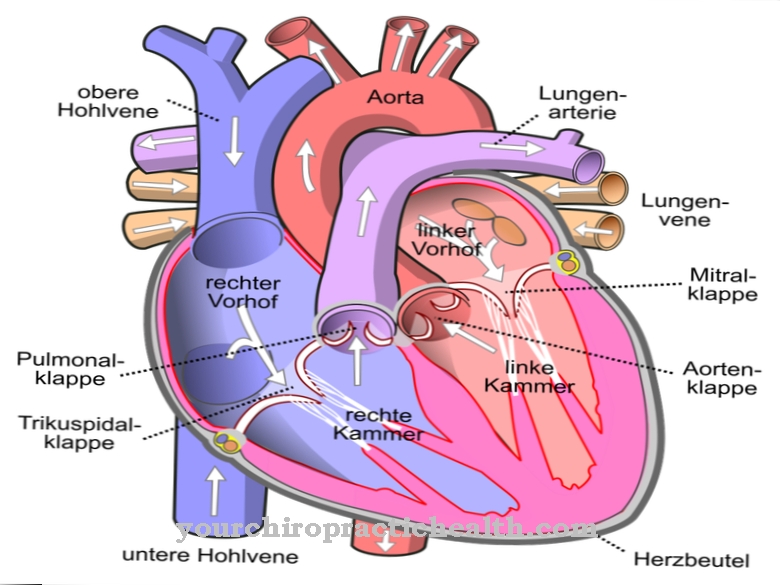Of the Yellow spot, also called macula lutea, is a small area on the retina through which the visual axis runs. The zone of sharpest vision (fovea) and color vision is located within the macula lutea, because the approx. 6 million cone-shaped M, L and S color sensors are almost exclusively concentrated in the fovea. The eye lenses can change their refractive power (accommodation) within certain limits so that, depending on requirements, near or distant objects in the yellow spot or in the fovea are sharply depicted.
What is the yellow spot?
The yellow spot or the macula lutea is a defined small area in the retina in extension of the visual axis. Depending on the definition, the yellow spot in humans has a diameter of 3 to 5 mm. There are 120 million highly light-sensitive and movement-sensitive rod-shaped light sensors and approx. 6 million less light-sensitive cone-shaped sensors in the three versions S, M and L cones, with which color vision is possible due to their different sensitivity to certain wavelengths of the incident light is.
The macula lutea contains in the middle the zone of sharpest vision, the fovea centralis. It only contains the cone-shaped light sensors. The fovea centralis has a diameter of approx. 1.5 mm and contains the foveola, also known as the visual dimple.Our central vision is concentrated in this tiny area with a diameter of approx. 0.35 mm. With its fovea centralis, the yellow spot achieves its greatest importance in color and sharp vision in the central field of vision with relatively high light intensity (daylight). At low light intensity, peripheral vision comes to the fore via the rod sensors, but at the price of very low resolution and the loss of color vision.
Anatomy & structure
The macula lutea is a defined area in the central area of the retina with a diameter of up to 5 mm, including the edge areas. The name Gelber Fleck is based on the fact that the retina in this area is more strongly pigmented with the carotenoids lutein and zeaxanthin. Anatomically, the macula differs from the other areas of the retina through the collection of three different color receptors S, M and L cones, which react differently to the different wavelengths of light, so that color differentiations within the visible color spectrum are possible.
In the central area of the macula there is a small funnel-shaped depression, the fovea centralis, in which only the three color receptors are located, about 140,000 per square mm. While all three types can be found in the outer areas of the fovea centralis, the foveola (dimple), which separates the absolutely central area of the fovea with a diameter of only 0.35 mm, only contains color receptors of type M and L (green and red). In the edge areas towards the outside, the light-intensive rod sensors are increasingly found in the macula.
Function & tasks
The macula lutea is the most important area of the retina for sharp, high-resolution and color vision. The yellow spot embodies the central field of vision. In the case of objects that are to be "inspected", the eyes automatically adjust themselves in such a way that the object is depicted in the foveola, the tiny indentation in the fovea centralis. To this end, the eye lens accommodates, also unconsciously, in such a way that, depending on the distance of the object, a high-resolution "image" can arise. However, the image is not created like on a projection screen, but each individual color receptor (M and L cones) reports its received stimulus to the visual center via its own ganglion cell.
This compiles an image that does not necessarily have to be an exact 1: 1 reproduction of reality, but has gone through several "image processing processes" in which also sensory feedback from other sensors, such as B. vestibular stimuli, influence. In stereoscopic vision, the brain can also complete the images of both eyes to a certain extent, as in the example of the blind spot (exit point of the optic nerve from the retina).
We should actually see two black points in our field of vision, which correspond to the blind spot of the right and left eye. The visual center, however, is able to replace the black points with image material, what the right and left eyes can see.
Diseases
One of the most common diseases of the macula lutea is age-related macular degeneration (AMD). The disease affects men and women from around the age of 50 equally. The damage to the macula initially leads to a decrease in visual acuity and contrast sensitivity. There is a high sensitivity to glare and visual field defects in the central visual field can occur.
Even if the exact causes of the disease have not yet been adequately clarified, it is certain that the origin of the disease lies in the supporting and supplying layers of the retina. Certain genetic defects are also seen as risk factors. Macular degeneration has also been associated with cloroquine as a result of malaria prophylaxis. Advanced diabetes can cause diabetic maculopathy, which is caused by fatty deposits in the macula and edema that can form due to the damaged vessels in the choroid.
Retinopathia centralis serosa (RCS) is relatively rare. It is caused by leakage of fluid from the choroid due to a leak in the hernial membrane. As a result, the retina can become detached in places and lead to symptoms such as “gray spot” in the central field of vision, image distortions and disturbances in color perception.
You can find your medication here
➔ Medicines for eye infectionsTypical & common diseases
- Age-related macular degeneration
- Photosensitivity
- Visual field loss


.jpg)





















.jpg)



